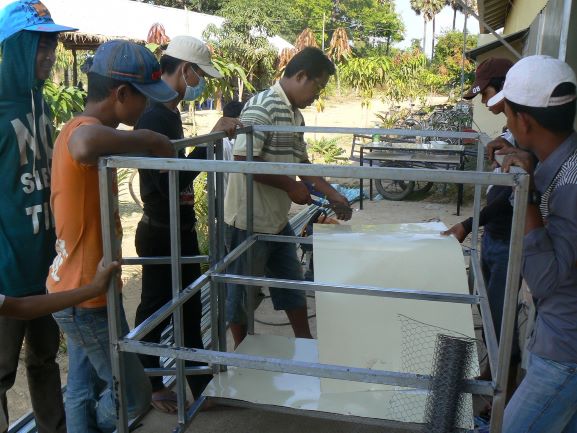
In September – October 2012, Mr. Doem Sam Un, the Executive Assistant and Mr. Sok Chantha, the Child Protection Officer were assigned to gather data in terms of the livelihood situation of children from 117 poorest families in 31 villages under Samraong Tong district in which 243 children and young people live through interviews of the parents and custodians or children themselves. The target villages for data collect included Dok Por, Kok Phnao, Chak Kabet, Chong Boeng, Trakiet, Trapaing Roka,Thmar Baing, Bak Chenhchien, Raong Kor, Samraong Tong Kandal, Samraong Tong Leu, Samraong Tong Kraom, Tonlop, Ou Kraing Ambel, Trapaing Kyogn, Tole Katil, Prey Pdao, Sangkruos Cheat, Sophy, Steung, Kok Chey, Kraing Tarath, Takam, Tuol Samnang, Perng Toek, Angkor Chear. The purpose of data collection was to find the best ways or some projects to help them out of poverty towards enhancement of their living status. We just selected the poorest families for interviews. At first, we communicated with village chiefs because they know their people very well, asked the lists or statistics of poorest villagers from them and sometimes, they accompanied us to meet the poorest families in person. We looked at their houses and photographed them and then asked them some questions regarding their name, ages, address, jobs, amount of income, number of children, the children’s study, jobs and their income, causes of poverty, challenges they faced, impacts on their children and their needs. The number of family members range from 3 to 10 persons. The children are aged from 1 to 26 years. With respect to the unemployment – 79 people range from 10 – 81 years of age are unemployed. 42 of them are women and the rest are men. Most elderly people aged from 50 years upward have chronic diseases and are very weak. They have to stay home and look after their grand children and houses. Some young women have to look after their houses and children and cook food for their husbands and children. Some young men do nothing except drink alcohol and join the gang. The unemployment was due to low and no education and no skills. The project has been implemented in order to contribute to poverty reduction of disadvantaged people in rural, remote areas of Kampong Speu province through provision of vocational training and creation of income-generating employment. The aim of vocational training projects is to secure occupation and income. Follow-up statistics serve the purpose of finding out what kind of work the ex-trainees do after leaving the training class of Khmer Association for Development and how much income they have as compared with the income they had before undergoing the training. Follow-up statistics are thus a good measuring instrument for the efficiency of a vocational training course. They can be conducted for a particular course or for a certain period of time. At the end of training course, the follow-up statistics will be used to evaluate the project results.